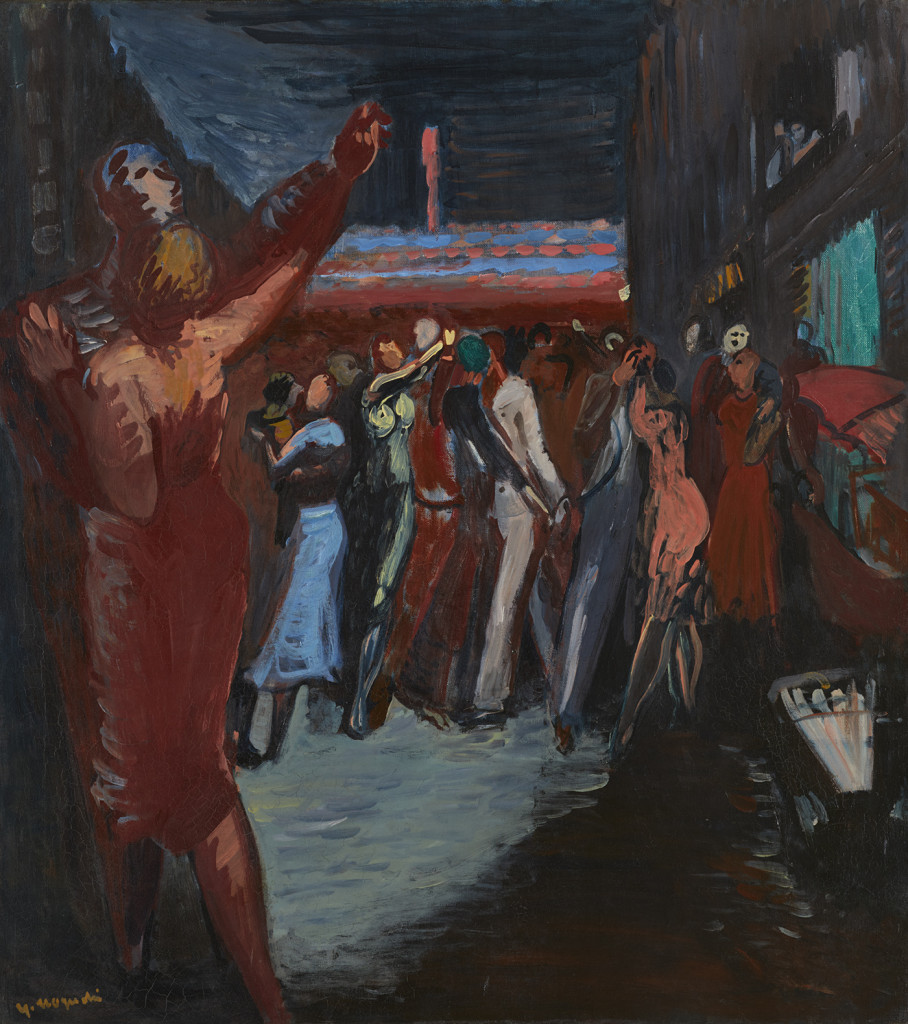Watch, Read, Listen
Recent Additions to the Collection MOMAT Collection Newsletter of the National Museum of Modern Art, Tokyo Noguchi Yataro, Bastille Day, 1932
BackIn this nocturnal scene a throng of men and women dance, their hands clasped, filling a narrow lane. Their clothing, in vivid shades of blue, white, and pink, emerges from the darkness in the glow of the city lights, beckoning the viewer’s eye. The painter, Noguchi Yataro, studied abroad in Paris from 1929-33, where he absorbed the influences of Matisse and others, and after returning to Japan, became a member of the Dokuritsu Fine Arts Society. This work was produced in Paris and first shown at the 4th Dokuritsu Exhibition in 1934, the year after his return, with the title July 14 Festival (Montparnasse). It depicts the annual Bastille Day festival on July 14 in France, commemorating the storming of the Bastille prison fortress which marked the start of the French Revolution.
The painting’s current title may remind film buffs of director René Clair’s Quatorze Juillet (Bastille Day; Japanese title Pari-sai [Paris Festival]) (Noguchi evidently changed his work’s title to match the Japanese film title, which had become well-known). Intriguingly, Clair’s film was produced in 1932, the same year as Noguchi’s painting. It is interesting to compare these two works, both inspired by the atmosphere of the same era. However, Noguchi’s painting lacks narrative content. In a statement released shortly after his return, Noguchi said:
ー“Painting is a medium that should advance on the strength of its own value and presence. Whatever else may accompany it – literary elements, musical elements, documentary elements, explanatory elements – I want to leave to those respective fields of endeavor, and let painting be painting.”1
Here he argues for the autonomy of painting, i.e. that painting should be fully devoted to visual exploration, and one can say he put that argument into practice in this painting. Noguchi’s friend the painter Okubo Tai, former owner of this painting, praised its intense contrasts between bright and dark areas, but in response Noguchi drew his attention to the importance of glazing, which utilizes the transparency of oil paint, rather than mere creation of gaudy contrasts.2 Close examination reveals loose, free-spirited brushwork in the dark areas of the painting, but one also notices the layering of cool colors such as green and complementary shades such as reddish brown, and the degree of care given to expressing the depth of the darkness and balancing the color tones overall. It is only because of this that the vivid hues of bright areas are so effectively brought to the fore.
[Notes]
- Noguchi Yataro, “Miscellaneous Thoughts: Let Painting Be Painting,” Dokuritsu Bijutsu no. 15, December 1934, p. 70.
- Okubo Tai, “On Noguchi Yataro, Etc.,” Mizue no. 495, November 1946, p. 53.
(Gendai no me, Newsletter of The National Museum of Modern Art, Tokyo No.636)
Release date :



